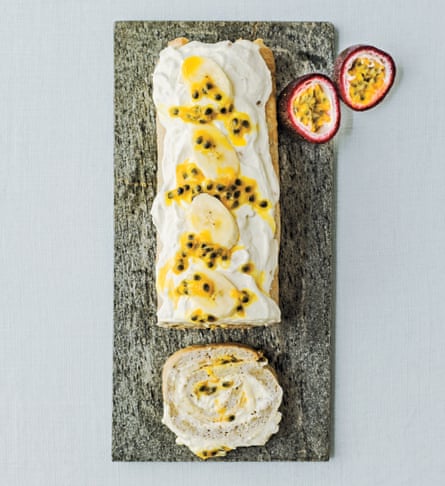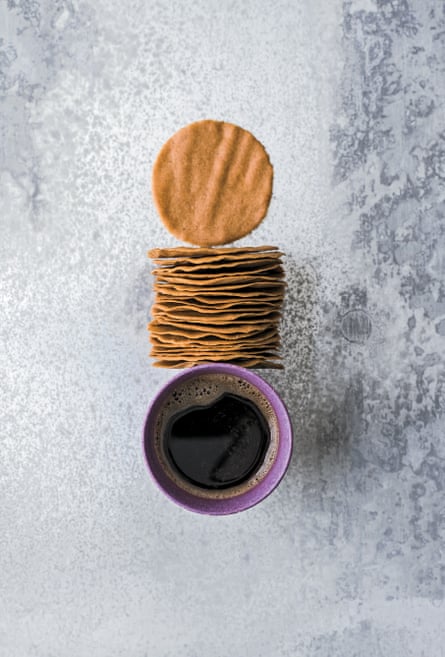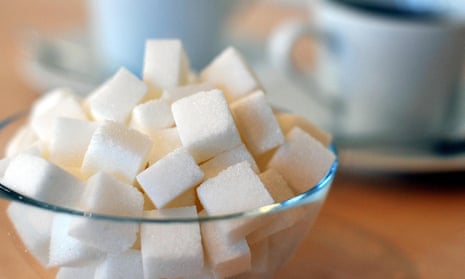The shocking truth about our sugar habits comes out of the mouth of babes. “It is not unheard of for me to remove all 20 baby teeth from a two-year-old child,” says Claire Stevens, a consultant in paediatric dentistry. This is an extreme case – but even on a “normal” day she can easily find she has extracted more than 100 teeth after seeing her roster of young patients. What frustrates her most is that dental decay is almost always preventable. Food industry giants peddling sugary treats may try to blame fat when it comes to obesity, but it is not fat that is rotting their teeth. Meanwhile, the latest figures show that around two-thirds of adults in England are overweight or obese.
“We are eating too much sugar and it is bad for our health,” summarised Public Health England’s robust report Sugar Reduction: the Evidence for Action (pdf), in October 2015. It is convinced of sugar’s link to obesity, the cost of which is £5bn a year, and expected to double over the next 25 years.
As part of the report, PHE published guidelines on sugar consumption. You might think a vanilla latte and a blueberry muffin a harmless enough breakfast; in fact, together they provide more than the total daily intake of added sugars recommended for adults – around 30g (the equivalent of around six teaspoonfuls) a day.
Last week, Cancer Research UK and the UK Health Forum urged action to reduce the sugar intake of children and teenagers after its study found that not only could 700,000 new cases of cancer be linked to obesity and excess weight over the next 20 years, but so could millions of cases of type 2 diabetes, coronary heart disease and stroke. A third of children aged 10 to 11 are already above a healthy weight and once that happens, it often continues into adulthood, as the public health statistics grimly demonstrate.
Healthcare specialists have been warning about the consequences of rising obesity for nearly 15 years. However, only over the past few months has the link with sugar started to hit home. Campaigns, such as Jamie Oliver’s Sugar Rush last August, highlighted just how much is added to our food. This was followed by a sugar awareness week by Action on Sugar. This year the pressure continues to build. Last week was obesity awareness week, known as JanUary. And a new public health campaign called Sugar Smart has been launched by Change4Life, aimed at helping people to make healthier food choices. Parents will soon be receiving leaflets via their child’s primary school, while TV and digital slots are helping to carry the message. As part of the campaign, there is a free Sugar Smart phone app that enables you to see the amount of total sugar in a product, simply by scanning the barcode.
These campaigns all acknowledge that there is no magic solution – it requires a combination of measures. But the one step they seem to agree on is a tax on sugary drinks, something that as late as October 2015, the government refused to consider, partly due to its nanny state connotations, as well as, we can assume, enormous lobbying from industry. However, pressure from the health lobby, coupled with national support for sugar reduction from supermarkets – Tesco, Aldi, Morrisons, the Co-op and Asda – has forced it to take another look. Many teenagers drink a can of soft drink a day. With around nine teaspoonfuls of sugar in a can, this alone pushes them over recommended guidelines with scant (if any) nutritional benefit. If price persuaded them to choose diet versions instead, it would make a real difference to their health. PHE has suggested taxing sugary soft drinks at 20%; others believe it should be higher. “The tax should be 50% if it is to reduce consumption,” says Tam Fry of the National Obesity Forum.
The pressure is on. In February, the government will announce a strategy on childhood obesity and it is believed that this may finally include that tax on sugary drinks. But even if this happens, it will only go so far. With around a quarter of adults now classed as obese, it is time that we really questioned our food choices.
Understanding sugar
There are a number of different sugars, but the one you buy in bags is known chemically as sucrose. Sucrose is a molecule created by two simpler sugars, fructose and glucose, joined together. Even natural sweeteners such as honey, agave nectar and maple syrup contain one or all of them; so does fruit, albeit in lower concentrations (even beans, vegetables and grains have a little). Although fruit juices and smoothies count towards one of your five-a-day, as Change4Life nutritionist Orla Hugueniot points out, they can have naturally occurring sugar levels approaching those of cola.
Irrespective of their source, the body processes sugars the same way for use as energy, but what it needs is a slow, steady supply rather than a series of deluges.
How to shop
You might think that you don’t need to worry about sugar because you don’t have a sweet tooth, but products such as soup, salad dressing and ready-made lasagne can contain as much sugar as cakes and biscuits. Action on Sugar suggests swapping cakes or biscuits for an alternative with less sugar, such as a currant bun or scone. The other sugar trap is alcohol – diet mixers are a good substitute with spirits, but don’t forget that a glass of wine, cider or beer may also contain sugar.
Over the past few years, manufacturers have started to reduce the added sugar in some products – usually by substituting artificial sweeteners – but reformulation is a long, slow process. In the meantime, many smaller producers are bringing healthier options to the fore. Brands such as Nakd, Plamil and Diablo are building market share in treats sweetened with fruit or alternative sweeteners, such as xylitol, while there is a growing appetite for fresh sugar-free cakes (from the likes of the Heavenly Cake Company, Romeo’s Sugar Free Bakery and Lola’s Cupcakes).
While food packaging labels contain details of sugar content, they don’t differentiate between naturally occurring sugars (in fruit, vegetables and unsweetened dairy products, all of which are considered OK) and added sugars. Added sugars to watch out for include cane and beet sugar, honey, any kind of syrup, dextrose, sucrose, fructose, glucose, maltose, molasses, hydrolysed starch or invert sugar. Some foods have colour-coded panels that give traffic-light indicators of sugar levels, but these only work as a rough guide. For instance, eating a meringue nest (more than 22.5% sugar, red) will give you a 10g sugar hit – a bowl of granola (5-22.5% sugar, amber) seems healthier, but will give you about the same because of the bigger portion.
The best approach is to retrain your palate to reduce its craving for the super-sweet with simple steps – at breakfast, replace the marmalade or jam on your toast with sliced banana, low-fat cream cheese or eggs, swap sugar-packed cereals for wholegrain versions. Limit the fruit juice you buy – servings should be no more than 150ml once a day. These are small steps, but they are in the right direction.
How to cook
As well as acting as a sweetener, sugar has a role in the texture of foods. For instance, it is the way sucrose melts into a glassy caramel that gives the strength to a meringue or the “snap” in crunchy biscuits. The fudgy texture when it is heated with butter is what makes chewy cookies or brownies so moreish. It also prevents the growth of large ice crystals in ice-creams. This means that successful cooking without adding sugar can require some thought.
Artificial sweeteners or processed, naturally derived sweeteners such maltitol, xylitol and stevia are worth considering, but be aware that they have different chemical properties from sugar and won’t always behave in the same way. More general techniques include: using raw fruit, which tastes sweeter than the same fruit cooked; reducing the sweetness of cake batters, but adding pieces of dried/fresh fruit; and adding agar powder to help keep frozen desserts smooth.
Sweet as they are: recipes
Tropical roulade

This is filled with cream sweetened with banana, while passion fruit adds a zingy, acidic bite.
(serves 8)
For the sponge
1 banana, about 200g
4 eggs
100g plain flour
For the filling
300ml whipping cream
2 bananas, 400g total weight
6 passion fruit
Preheat the oven to 220C/200C fan/gas mark 7. Line a 36 x 28cm baking tin with silicone baking paper.
To make the sponge, peel and mash the banana in a large bowl. Separate the eggs and add the yolks to the banana and place the whites in a medium bowl. Using an electric whisk, whisk the egg whites until very stiff – you will have reached the right level of stiffness if they won’t move when the bowl is tipped to the side.
Whisk the yolks and banana together until you have a foamy mixture. Sift the flour on top of the yolks, then spoon the whisked whites on top of the flour. Gently fold everything together until well combined.
Gently spread the mixture evenly across the baking paper in the baking tin. Bake for 10 minutes until golden brown. Lift the sponge out of the baking tin using the lining paper. With the paper still in place and using a clean tea towel to hold the sponge, roll it up, starting from one short edge, into a cylinder. Leave it to cool completely.
Just before you want to eat, make the filling. Whip the cream until it forms firm peaks. Peel and mash one of the bananas, then fold into the cream. Peel and finely slice the second banana. Cut the passion fruit in half and scoop out the seeds and pulp. Reserve some of the fruit for decoration. Gently unroll the sponge cylinder and spread it with two-thirds of the cream mixture. Scatter the banana slices and passion fruit seeds and pulp across the cream. Roll the sponge up again, gently peeling off the lining paper as you do so.
Place the finished roulade seam down and trim the ends to neaten it. Spread the top with the remaining cream mixture. Top with the reserved banana and passion fruit. Cut it into slices and serve immediately.
Cinnamon thins

These buttery, wafer-thin biscuits are part Swedish pepparkaka and part delicate tuile.
(makes 18)
1 egg white
4 tbsp unsweetened apple puree
2tsp stevia powder
1tsp ground cinnamon
35g plain flour
25g unsalted butter, melted
Preheat the oven to 160C/140C fan/gas mark 3. Line a couple of baking sheets with silicone baking paper.
Whisk the egg white in a bowl until it forms a thick froth, then whisk in the apple puree, stevia powder and cinnamon.
Stir the flour and melted butter together in a small bowl. Fold into the egg white mix until you have a pale brown, thick mixture.
Dollop a heaped teaspoonful of the mixture on to one of the baking sheets.
Use the back of a tablespoon to smooth it out evenly into a round about 7cm in diameter and 1–2mm thick – use a cookie cutter as a guide if you want them perfectly round, or cut a circle out of a piece of card to make a template. Repeat until you have filled the baking sheets.
Bake the thins for about 30 minutes until they have darkened and look dry – start checking them after 20 minutes.
Transfer them to a wire rack. They will still be soft while they are hot, but once they have cooled they should be completely hard and crisp. They will keep for about a week if they are stored in an airtight container.

Comments (…)
Sign in or create your Guardian account to join the discussion